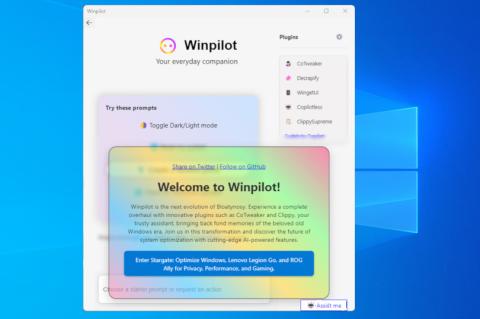Die P-Serie beschäftigt sich mit der Qualität von Telephonübertragungen, Telphoninstallationen und lokalen Telephonnetzen.
P.10
Vocabulary of terms on telephone transmission quality and telephone sets
P.11
Effect of transmission impairments
P.16
Subjective effects of direct crosstalk; thresholds of audibility and intelligibility
P.30
Transmission performance of group audio terminals (GATs)
P.32
Evaluation of the efficiency of telephone booths and acoustic hoods
P.33
[Withdrawn] Subscriber telephone sets containing either loudspeaking receivers or microphones associated with amplifiers
Deleted after the relevant information contained in this Recommendation was incorporated in new ITU-T P.340
P.35
Handset telephones
P.36
Efficiency of devices for preventing the occurrence of excessive acoustic pressure by telephone receivers
P.38
Transmission characteristics of operator telephone systems (OTS)
P.48
Specification for an intermediate reference system
P.50
Artificial voices
P.51
Artificial mouth
P.52
Volume meters
P.53
Psophometer for use on telephone-type circuits
This Recommendation is published under alias number O.41
P.54
Sound level meters (apparatus for the objective measurement of room noise)
P.55
Apparatus for the measurement of impulsive noise
P.56
Objective measurement of active speech level
P.57
Artificial ears
P.58
Head and torso simulator for telephonometry
P.59
Artificial conversational speech
P.61
Methods for the calibration of condenser microphones
P.62
[Withdrawn] Measurements on subscribers' telephone equipment
P.62 is out of date and was deleted.
The relevant text therein will be transferred to ITU-T P.35 during its revision
P.63
[Withdrawn] Methods for the evaluation of transmission quality on the basis of objective measurements
P.64
Determination of sensitivity/frequency characteristics of local telephone systems
P.65
[Withdrawn] Objective instrumentation for the determination of loudness ratings
P.65 is out of date and was deleted.
P.66
[Withdrawn] Methods for evaluating the transmission performance of digital telephone sets
Deleted after having been merged with P.31 into ITU-T P.310
P.75
Standard conditioning method for handsets with carbon microphones
P.76
Determination of loudness ratings; fundamental principles
P.78
Subjective testing method for determination of loudness ratings in accordance with Recommendation P.76
P.79
Calculation of loudness ratings for telephone sets
P.80
Methods for subjective determination of transmission quality
Renumbered P.800 when revised in 1996
P.82
Method for evaluation of service from the standpoint of speech transmission quality
P.84
Subjective listening test method for evaluating digital circuit multiplication and packetized voice systems
P.85
A method for subjective performance assessment of the quality of speech voice output devices
P.300
Transmission performance of group audio terminals (GATs)
P.310
Transmission characteristics for telephone band (300-3400 Hz) digital telephones
P.311
Transmission characteristics for wideband (150-7000 Hz) digital handset telephones
P.313
Transmission characteristics for cordless and mobile digital terminals
P.330
Speech processing devices for acoustic enhancement
P.340
Transmission characteristics and speech quality parameters of hands-free terminals
Former Rec. P.34, renumbered P.340
P.341
Transmission characteristics for wideband (150-7000 Hz) digital hands free telephony terminals
P.342
Transmission characteristics for telephone band (300-3400 Hz) digital loudspeaking and hands-free telephony terminals
P.350
Handset dimensions
P.360
Efficiency of devices for preventing the occurrence of excessive acoustic pressure by telephone receivers
Former Rec. P.36, renumbered P.360
P.370
Coupling Hearing Aids to Telephone sets
Former Rec. P.37, renumbered P.370
P.380
Electro-acoustic measurements on headsets
P.501
Test signals for use in telephonometry
P.502
Objective test methods for speech communication systems using complex test signals
P.505
One-view visualization of speech quality measurement results
P.561
In-service non-intrusive measurement device - Voice service measurements
P.562
Analysis and interpretation of INMD voice-service measurements
P.563
Single-ended method for objective speech quality assessment in narrow-band telephony applications
P.Imp563
ImplementersÆ Guide for ITU-T Recommendation P.563
P.564
Conformance testing for narrowband voice over IP transmission quality assessment models
P.581
Use of head and torso simulator (HATS) for hands-free terminal testing
P.800
Methods for subjective determination of transmission quality
Former Rec. P.80
P.800.1
Mean Opinion Score (MOS) terminology
P.810
Modulated noise reference unit (MNRU)
P.830
Subjective performance assessment of telephone-band and wideband digital codecs
P.831
Subjective performance evaluation of network echo cancellers
P.832
Subjective performance evaluation of hands-free terminals
P.833
Methodology for derivation of equipment impairment factors from subjective listening-only tests
P.834
Methodology for the derivation of equipment impairment factors from instrumental models
P.835
Subjective test methodology for evaluating speech communication systems that include noise suppression algorithm
P.840
Subjective listening test method for evaluating circuit multiplication equipment
Former ITU-T P.84
P.851
Subjective quality evaluation of telephone services based on spoken dialogue systems
P.861
[Withdrawn] Objective quality measurement of telephone-band (300-3400 Hz) speech codecs
P.861 was recognized as having certain limitations in specific areas of application.
It was replaced by P.862, which contains an improved objective speech quality assessment algorithm.
P.862
Perceptual evaluation of speech quality (PESQ): An objective method for end-to-end speech quality assessment of narrow-band telephone networks and speech codecs
P.862.1
Mapping function for transforming P.862 raw result scores to MOS-LQO
P.862.2
Wideband extension to Recommendation P.862 for the assessment of wideband telephone networks and speech codecs
P.862.3
Application guide for objective quality measurement based on Recommendations P.862, P.862.1 and P.862.2
P.880
Continuous evaluation of time-varying speech quality
P.910
Subjective video quality assessment methods for multimedia applications
P.911
Subjective audiovisual quality assessment methods for multimedia applications
P.920
Interactive test methods for audiovisual communications
P.930
Principles of a reference impairment system for video
P.931
Multimedia communications delay, synchronization and frame rate measurement
P.1010
Fundamental voice transmission objectives for VoIP terminals and gateways
Supplements
P.Sup1
[Withdrawn] Precautions to be taken for correct installation and maintenance of an IRS
P.Sup10
Considerations relating to transmission characteristics for analogue handset telephones
P.Sup14
[Withdrawn] Subjective performance assessment of digital processes using the modulated noise reference unit (MNRU)
P.Sup15
[Withdrawn] Wideband (7 kHz) modulated noise reference unit (MNRU) with noise shaping
P.Sup16
Guidelines for placement of microphones and loudspeakers in telephone conference rooms [1] and for Group Audio Terminals (GATs)
P.Sup17
[Withdrawn] Direct loudness balance against the intermediate reference system (IRS) for the subjective determination of loudness ratings
Replaced by annex D of P.78
P.Sup19
[Withdrawn] Information on some loudness loss related ratings
P.Sup20
Examples of measurements of handset receive-frequency responses: dependence on earcap leakage losses
P.Sup23
ITU-T coded-speech database
P.Sup24
Parameters describing the interaction with spoken dialogue systems


